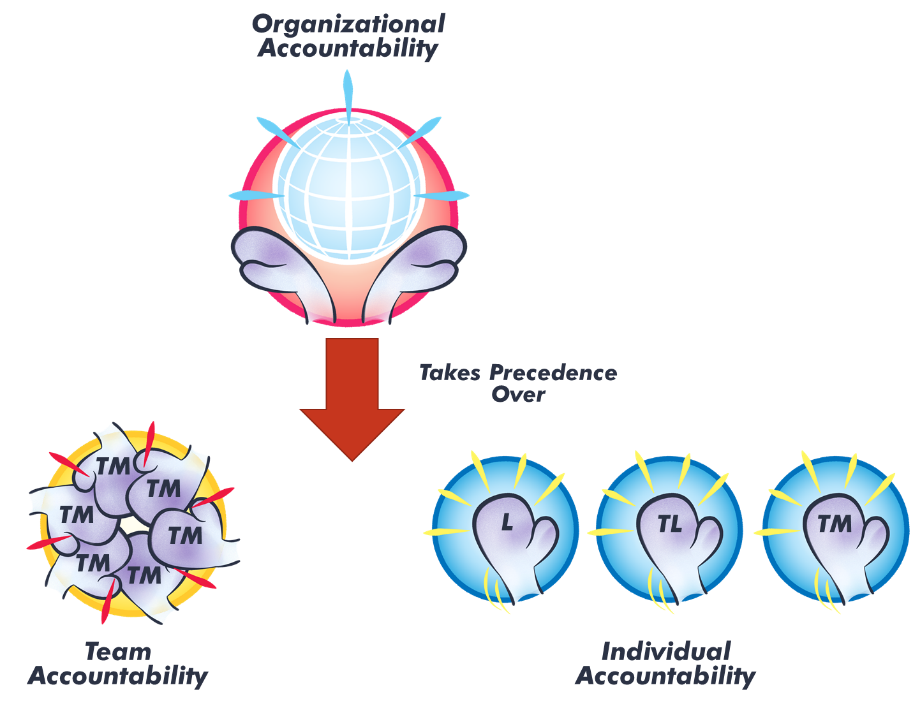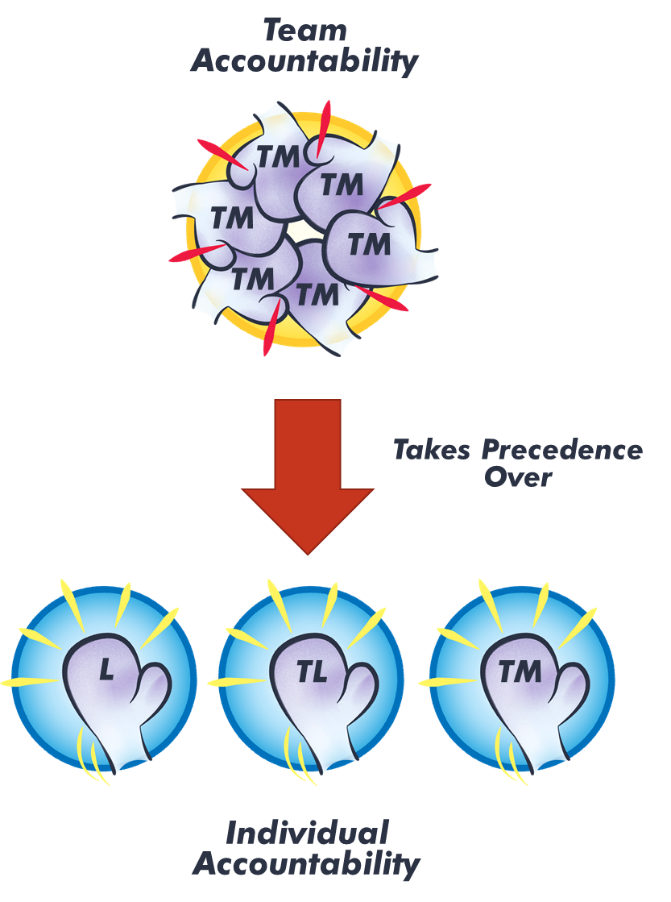- 2E1. Everyone in the organization is subject to three types of accountability: organizational, team, and individual.
- 2E2. Figure 2.4. The three types of accountability in an organization.

- 2E3. Organizational Accountability (OA) is the commitment to act in the best interests of the organization.
- 2E4. Team Accountability (TA) is the commitment to achieve team outcomes effectively and efficiently, while building organizational relationships.
- 2E5. Individual Accountability (IA) is the commitment to achieving individual outcomes effectively and efficiently, while building organizational relationships.
- 2E6. Rules for the three types of accountability:
- 2E6i. Rule #1: Organizational accountability always takes precedence over team and individual accountability.
- 2E6ia. Figure 2.5. Organizational Accountability takes precedence over Team or Individual Accountability.

- 2E6ia. Figure 2.5. Organizational Accountability takes precedence over Team or Individual Accountability.
- 2E6ii. Rule #2: Within the context of a team, team accountability takes precedence over individual accountability.
- 2E6iia. This means that if there is a conflict over what’s in the best interest of the team versus what’s in the best interest of a member of the team, the team’s interests win out.
- 2E6iib. Figure 2.6. Team Accountability takes precedence over Individual Accountability.

- 2E6iii. Rule #3: Accountability is shared.
- 2E6iiia. Both organizational and team accountability are shared accountabilities.
- 2E6iiib. Organizational accountability is shared by every accountable individual in the organization.
- 2E6iiic. The sharing of organizational accountability helps ensure that resources, particularly people, are aligned with the organization’s most important outcomes.
- 2E6i. Rule #1: Organizational accountability always takes precedence over team and individual accountability.
